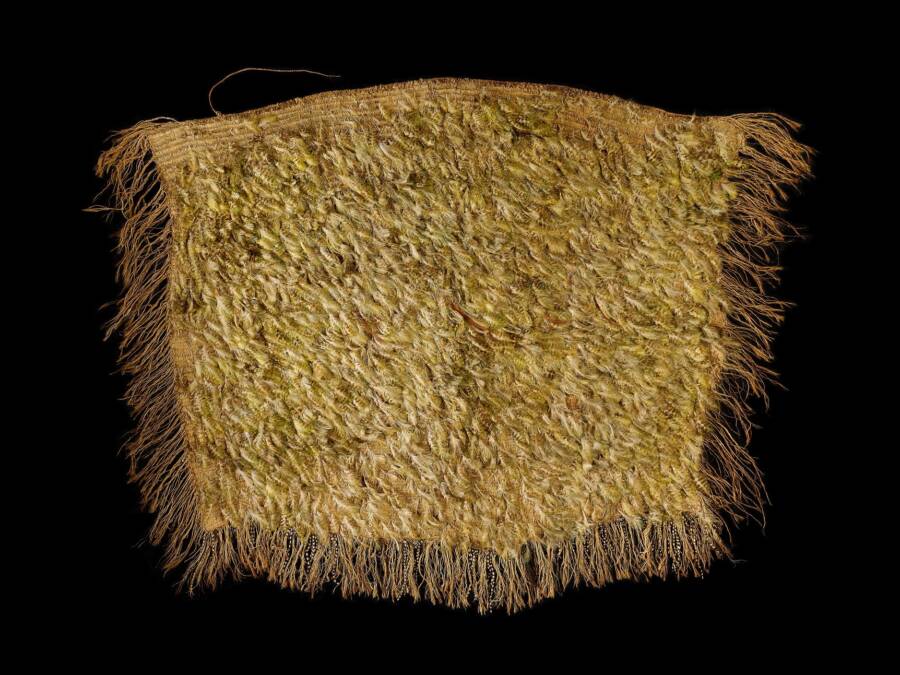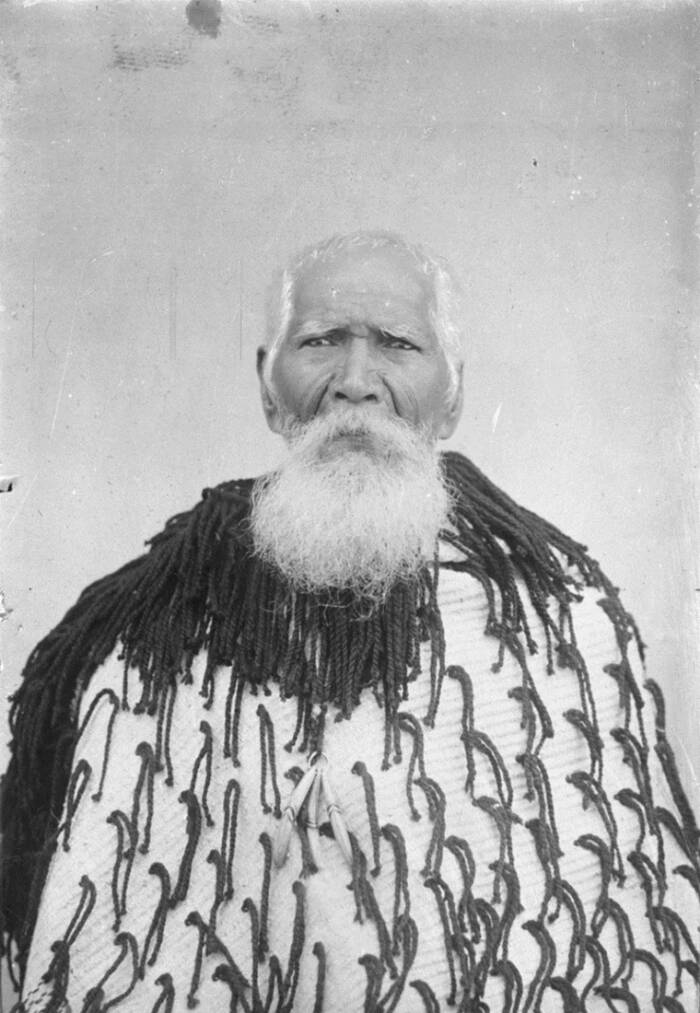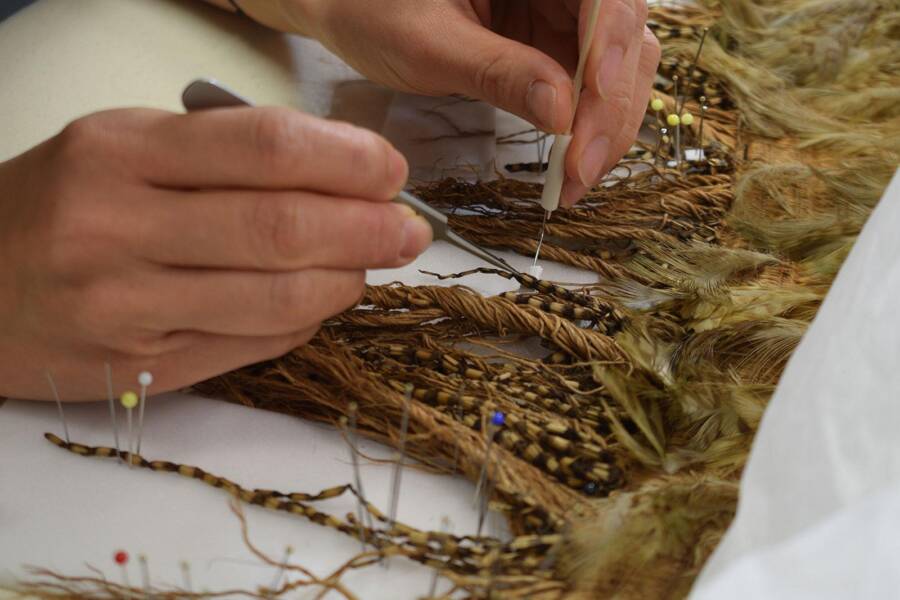Over 100 hours of work went into restoring the only known complete Māori kahu kākāpō, a traditional cloak made from the feathers of a rare flightless parrot native to New Zealand.

Trustees of the British Museum and Culture Perth and KinrossThe Māori kahu kākāpō, a traditional cloak made from the green feathers of the kākāpō parrot.
The only surviving Māori kahu kākāpō, a traditional cloak, is now on display at the Perth Museum and Art Gallery (PMAG) in Scotland. The cloak is made from the feathers of New Zealand’s green kākāpō, the world’s only flightless parrot.
After extensive restoration at the British Museum in London, the cloak is in excellent shape and on display for viewers to appreciate an important piece of Māori culture.
The Kahu Kākāpō In Māori Culture

Public DomainA man wearing a traditional cloak made with tassels instead of feathers.
The Māori people of New Zealand have a rich culture surrounding the creation of kākahu, traditional cloaks made of flax fibers and feathers. Historically, the feathers came from kiwis and kākāpō parrots, large flightless birds sometimes called “moss chickens.”
The Māori crafted these cloaks for ceremonial purposes. They were only worn by high-status individuals and were very rare.
European settlers to New Zealand sometimes collected the cloaks and brought them back home with them, as was the case for the most recent kākahu to go on display.
In 1823, David Ramsay, a Scotsman who traveled to Australia as a ship’s surgeon, somehow came into possession of this kahu kākāpō. Then, in 1842, he donated it to the Perth Literary and Antiquarian Society, where it remained for over a century.
Just recently, the newly-opened Perth Museum teamed up with the British Museum to painstakingly restore the cloak, now the only known complete kahu kākāpō in existence.
Restoring The Māori Cloak

Trustees of the British Museum and Culture Perth and KinrossWorkers at the British Museum repair the kahu kākāpō.
In 2022, the Perth Museum and Art Gallery reached out to the British Museum regarding the kahu kākāpō. The museum wanted to put the artifact on display but worried it was too fragile. They sought out help in repairing the cloak to display at their spring 2024 opening.
At the British Museum, researchers analyzing the cloak estimated that Māori craftsmen made the garment in the early 1800s after Europeans arrived in New Zealand.
Prior to the arrival of the kahu kākāpō at the British Museum, Māori representatives came to Perth to perform ceremonies with the cloak, which included prayers for its safe travels to London, singing, and discussing Māori culture with researchers and museum staff.
Then, the cloak arrived in London, and restoration got underway. Restorers worked with a Māori adviser to ensure that they were adhering to appropriate cultural practices.
First, conservators used mulberry paper to support the bent and detached feathers on the cloak. The pōkinikini, or flax strands within the cloak, also needed immediate attention. According to the British Museum’s press release, the original craftsmen likely dyed the strands with iron-tannin dye which gradually weakened them over time. Restorers also applied mulberry paper to these strands to offer support.
Then, researchers needed to see how the cloak was traditionally worn in order to display it properly. Careful examination of the garment revealed that it would have been fastened at the right shoulder. Following this revelation, the museum crafted a custom mount to display the cloak as the Māori would have worn it.
In total, over 100 hours of work went into restoring the cloak, and oftentimes, conservators had to work with fine-tipped tools under microscopes.
Additionally, the presence of kākāpō feathers inspired the conservation team to send DNA samples to researchers who are leading conservation efforts for the endangered flightless bird.
“It has been a great privilege for us at Perth Museum and Art Gallery and the British Museum to contribute to the care of this fascinating and enduring taonga (cultural heritage) and to help ensure the kahu can take wing into a secure future,” the British Museum stated.
As of March 30, 2024, the kahu is officially on display at the Perth Museum and Art Gallery.
After reading about the Māori kākāpō cloak, learn about the mokomokai heads of Māori tribesmen. Then, read all about the mako shark, a creature highly revered in Māori culture.





